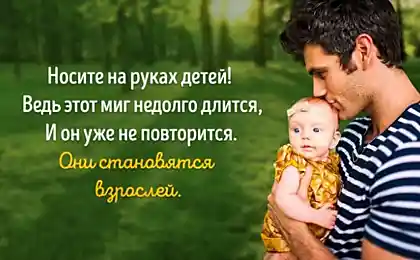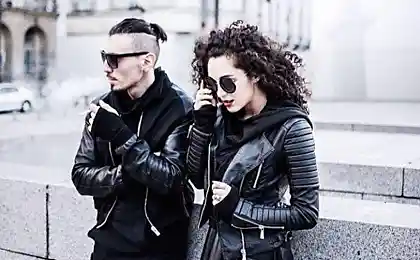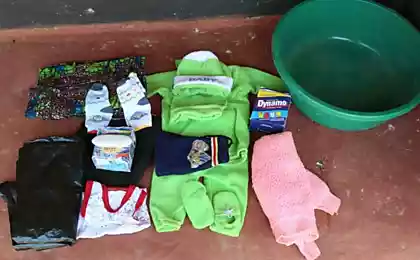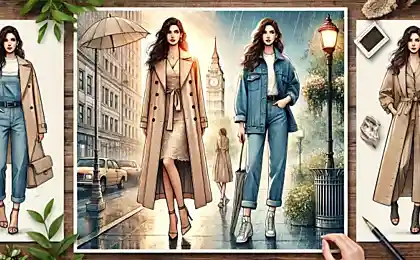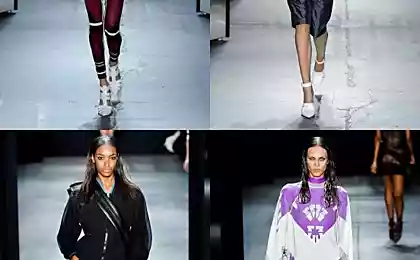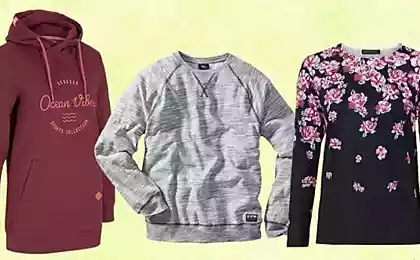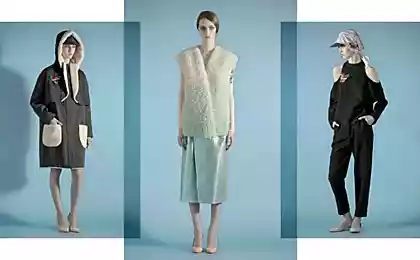1075
15 Ruthless Photos On How sews clothes that you wear
Child labor is prohibited in most countries, but this fact does not prevent the owners of some of the companies involved in the work of "young professionals". According to the International Labour Organization (International Labour Organisation), today employs about 260 million children in the world.
Of these, about 170 million are employed in the production of textiles and clothing comes in small and large companies in the markets of different countries, including in Russia. In factories where child labor, repeatedly managed to penetrate reporters. Revision Anews offers a look at a selection of images of reporters made in various companies in recent years.
According to the International Labour Organization, the children are involved in almost all stages of garment production, from raw material acquisition to the work of sewing machines
Children for harvest cotton field in Uzbekistan
.
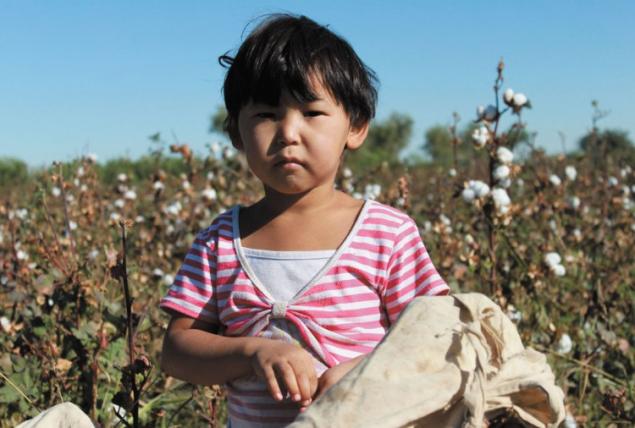
In 2011, Uzbekistan became the focus of "cotton" scandal: the leading apparel brands have announced a boycott of the country for the use of child labor during the cotton harvest. A human rights organization Human Rights Watch, in turn, made the figures, saying that every fall in the country to work on the collection of raw materials out of the order of 1, 5 - 2 million children, including preschoolers
Pyatiklassnitsa and preschooler. in a cotton field.

Scandal with cotton and children came to the fact that in that year the organizers of the Paris fashion week under pressure from human rights activists were not allowed to participate in the shows models of the Uzbek president's daughter Gulnara Karimova. Experts from the Human Rights Watch commented:. "Forcing children to work - it's not very glamorous»
According to figures cited by International Labour Organisation, today leaders in attracting children to work in the garment industry is Bangladesh, Egypt, Thailand, Pakistan and China.
Only in Bangladesh, about 7,000 factories (mostly small businesses) work involving minors. The average age of the local "staff" - from 10 to 14 years. At one of these mini-plants visited photographer Claudio Kassilas.
Employees of the factory work from 6 to 6, 5 days a week
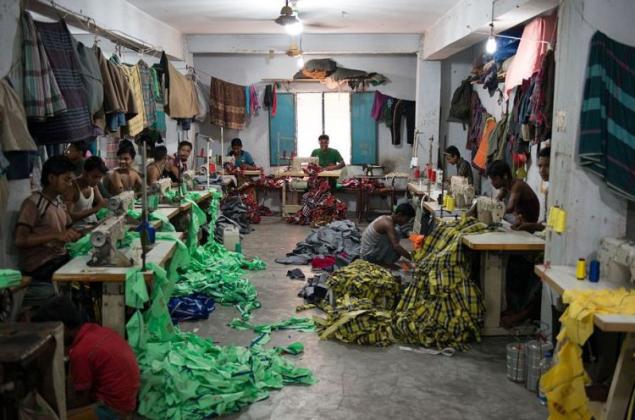
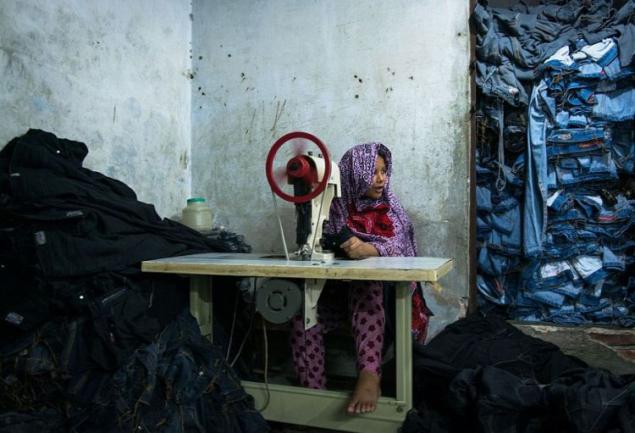

The main responsibility of this boy is sewing tabs with the name brand for jeans.
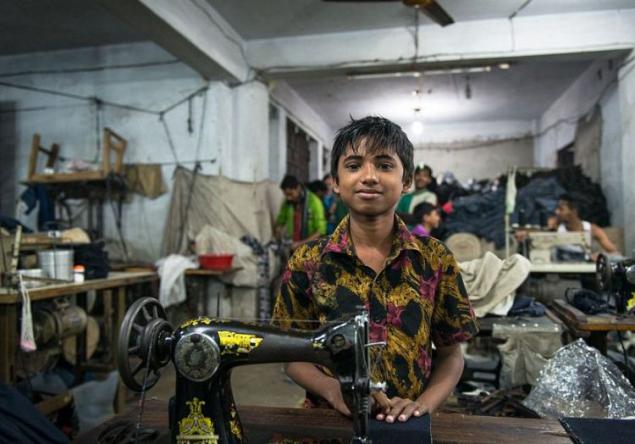
products ready for shipment.

Due to the busy schedule of children do not have the opportunity to attend school.
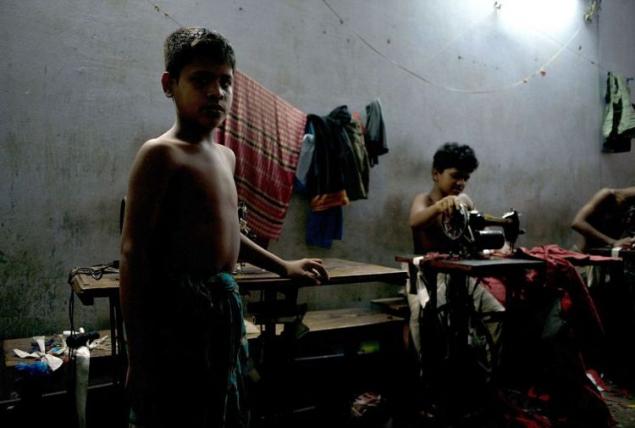
According to the journalist, the majority of the factory workers live immediately. For those who have nowhere to go after the working day has beds and even a kind of shower.
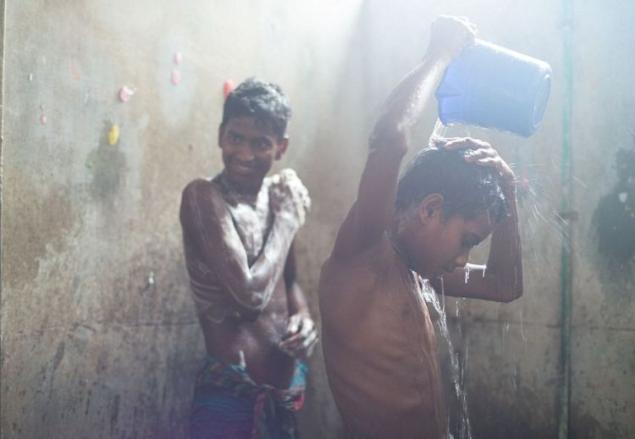
Working conditions at these factories, according to the journalist, do not go to any comparison with what can be found in the mainstream. First of all, it concerns non-compliance with safety regulations, which is why most tragic incidents happen.
Electrical panel at the factory.

During the month of the employees of this factory (both children and adults) earn about 900 Bangladeshi taka - about 650 rubles. The highest possible salary, according to the journalist, -. Taka 1900 or 1600 rubles
For comparison, the minimum wage garment industry workers, the Government of Bangladesh established in 2013, is 5,300 taka, or about 4, 2 thousand rubles
. This photo was taken a journalist The Sydney Morning Herald near the garment factories in Cambodia. The picture shows a 16-year-old seamstress Vienne Dinah.
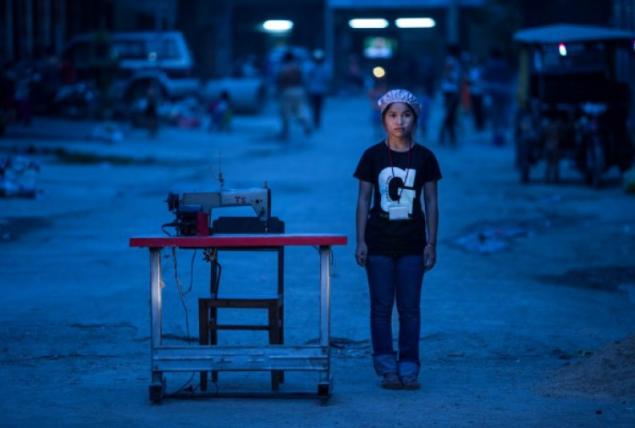
According to the newspaper, about 700 thousand of Cambodians, including children, are involved in the garment industry. The average monthly earnings of employees - 128 dollars at the 48-hour working week
. And these pictures were taken at one of the factories producing clothing in Vietnam Children's Fund employees of Blue Dragon Children's Foundation during the next raid.
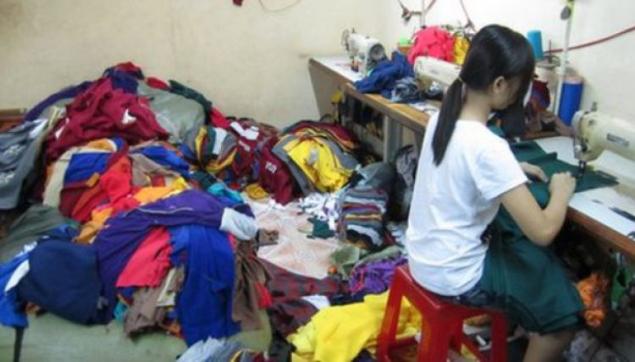

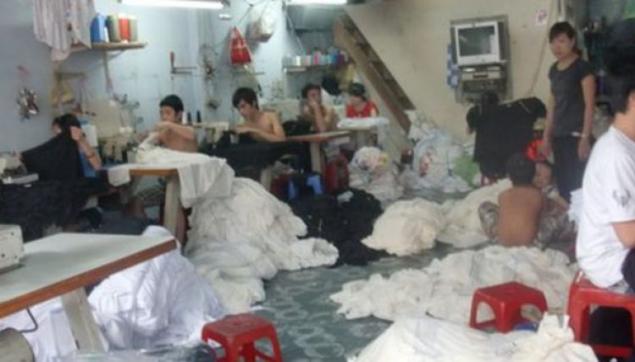
Despite the poor quality of the photos, it is clear that conditions on the Vietnamese factories that exploit child labor, differ little from Bangladesh enterprises. Most of the children in such factories, according to the fund, working under duress - they brought in from remote villages, literally redeeming parents
. In 2012, two teenagers jumped out of the window on the third floor of the underground factory in Ho Chi Minh City and called for help.
«I together with another 11 children were brought from the village by bus. My parents were happy that I can make money. At the factory, we have been working for two years. We start at six in the morning, finishing at midnight. We do not pay for it. If we make mistakes, when sewn, beat us with a stick, "- he said the employees fund one of the boys
. Loading ... Loading ...
Liked? Share with your friends!
Loading ... Loading ...
Of these, about 170 million are employed in the production of textiles and clothing comes in small and large companies in the markets of different countries, including in Russia. In factories where child labor, repeatedly managed to penetrate reporters. Revision Anews offers a look at a selection of images of reporters made in various companies in recent years.
According to the International Labour Organization, the children are involved in almost all stages of garment production, from raw material acquisition to the work of sewing machines
Children for harvest cotton field in Uzbekistan
.


In 2011, Uzbekistan became the focus of "cotton" scandal: the leading apparel brands have announced a boycott of the country for the use of child labor during the cotton harvest. A human rights organization Human Rights Watch, in turn, made the figures, saying that every fall in the country to work on the collection of raw materials out of the order of 1, 5 - 2 million children, including preschoolers
Pyatiklassnitsa and preschooler. in a cotton field.

Scandal with cotton and children came to the fact that in that year the organizers of the Paris fashion week under pressure from human rights activists were not allowed to participate in the shows models of the Uzbek president's daughter Gulnara Karimova. Experts from the Human Rights Watch commented:. "Forcing children to work - it's not very glamorous»
According to figures cited by International Labour Organisation, today leaders in attracting children to work in the garment industry is Bangladesh, Egypt, Thailand, Pakistan and China.
Only in Bangladesh, about 7,000 factories (mostly small businesses) work involving minors. The average age of the local "staff" - from 10 to 14 years. At one of these mini-plants visited photographer Claudio Kassilas.
Employees of the factory work from 6 to 6, 5 days a week



The main responsibility of this boy is sewing tabs with the name brand for jeans.

products ready for shipment.

Due to the busy schedule of children do not have the opportunity to attend school.

According to the journalist, the majority of the factory workers live immediately. For those who have nowhere to go after the working day has beds and even a kind of shower.

Working conditions at these factories, according to the journalist, do not go to any comparison with what can be found in the mainstream. First of all, it concerns non-compliance with safety regulations, which is why most tragic incidents happen.
Electrical panel at the factory.

During the month of the employees of this factory (both children and adults) earn about 900 Bangladeshi taka - about 650 rubles. The highest possible salary, according to the journalist, -. Taka 1900 or 1600 rubles
For comparison, the minimum wage garment industry workers, the Government of Bangladesh established in 2013, is 5,300 taka, or about 4, 2 thousand rubles
. This photo was taken a journalist The Sydney Morning Herald near the garment factories in Cambodia. The picture shows a 16-year-old seamstress Vienne Dinah.

According to the newspaper, about 700 thousand of Cambodians, including children, are involved in the garment industry. The average monthly earnings of employees - 128 dollars at the 48-hour working week
. And these pictures were taken at one of the factories producing clothing in Vietnam Children's Fund employees of Blue Dragon Children's Foundation during the next raid.



Despite the poor quality of the photos, it is clear that conditions on the Vietnamese factories that exploit child labor, differ little from Bangladesh enterprises. Most of the children in such factories, according to the fund, working under duress - they brought in from remote villages, literally redeeming parents
. In 2012, two teenagers jumped out of the window on the third floor of the underground factory in Ho Chi Minh City and called for help.
«I together with another 11 children were brought from the village by bus. My parents were happy that I can make money. At the factory, we have been working for two years. We start at six in the morning, finishing at midnight. We do not pay for it. If we make mistakes, when sewn, beat us with a stick, "- he said the employees fund one of the boys
. Loading ... Loading ...
Liked? Share with your friends!
Loading ... Loading ...
Are children of Coca-Cola is harmful? A doctor Komarovsky will surprise you!
Break Template - Marry Kom on the richest men in the world






